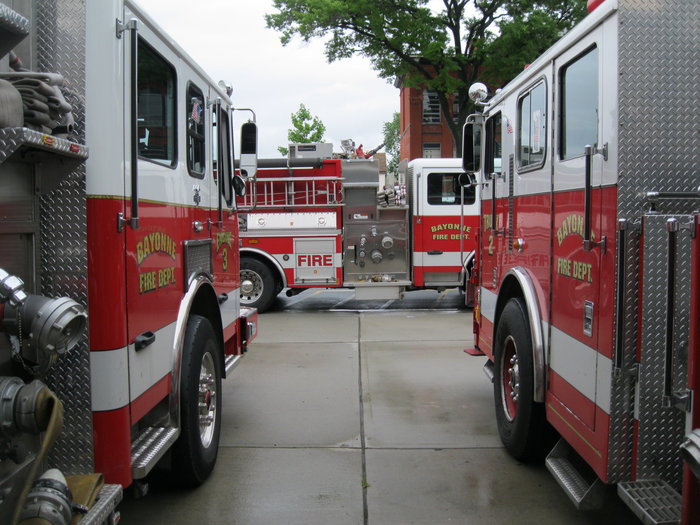Bayonne fire officials will travel to South Dakota shortly to check on the progress of their latest piece of firefighting equipment.
“We want to make sure everything is on schedule,” said Fire Chief Greg Rogers.
The foam tender will become a powerful tool for dealing with chemical and fuel fires in a city which stores a host of various chemicals and is crisscrossed with highways.
Traditional fires such as those found in homes are generally fought with water. But in some cases, water can actually cause a chemical fire to spread, and require specialized hazardous- material techniques and equipment as crews must find new and more expedient ways to deal with gasoline, oil, or chemical spills that could erupt into flames, as well as suppress those already ignited.
“Foam,” Rogers said, “extinguishes by blanketing, suffocating, cooling, and preventing vapor rising. Firefighting foam is a specialized agent that is used for the suppression of most flammable liquid fires. Foam is normally used to extinguish hydrocarbon fires such as heating oil, diesel, kerosene, and gasoline, and polar-solvent fires such as alcohol, esters, and keytones.”
Last year, the city received a $685,000 Port Security grant from the Department of Homeland Security from which the city has purchased a 4,000-gallon foam tender to be used specifically for petrochemical fires.
“The foam tender will serve as a mechanism of rapid delivery and deployment of firefighting foam to petrochemical emergencies,” Rogers said.
This is 4,000 gallons of concentrate that, when mixed with water, is capable of producing 400,000 gallons of foam solution used for extinguishing alcohol- and hydrocarbon-based fires, Rogers said, and can be pumped directly to a truck for quick high-capacity application.
Although fires are less frequent along the waterfront than in the past, the potential is always there. In June 2011, a power-plant fire near the chemical-storage facilities on the east side of Bayonne had the potential to cause a serious chemical fire.
While the fire proved to be electrical, not chemical, Rogers said at the time the fire department hazardous-material team had to be prepared for any possibility.
As recently as January 2012, the BFD was involved in a mutual-aid effort with the town of Kearny when a tractor trailer carrying 8,000 gallons of fuel overturned on the Newark Turnpike. Since fuel trucks travel along Route 440, and there have been problems with overturned vehicles, including fuel vehicles, along a curved stretch of that highway near the Jersey City boarder, there is potential for such an accident in or near Bayonne. So officials say they must be prepared for the worst. Foam has been a tool used by the fire department since the early 1980s as an alternative to water.
Fire-suppressing foam has been around for more than a century to help coat a fire and coat the fuel, basically suffocating the fire by denying it oxygen. Since the 1950s, foam has been widely used in situations where water and other fire-suppression agents are either ineffective or dangerous.
But in the past, it has been a cumbersome and labor-intensive effort.
“The Bayonne Fire Department currently carries approximately 40 55-gallon drums of foam concentrate that must be painstakingly handled by the barrel and drafted by pickup tubes, which is a manpower-intensive operation,” Rogers said.
In a city that is constantly at risk of a chemically-fueled fire erupting from a storage facility or a tanker, a city crisscrossed by highways over which fuel trucks constantly travel, risking an accident, another way had to be found to distribute foam. The new foam tender will solve that problem.
Rogers said officials hope to bring the new foam tender back to Bayonne early in 2014, which will help provide another level of protection to a city once described by the FBI as part of the most two dangerous miles in America.
Al Sullivan may be reached at asullivan@hudsonreporter.com.
